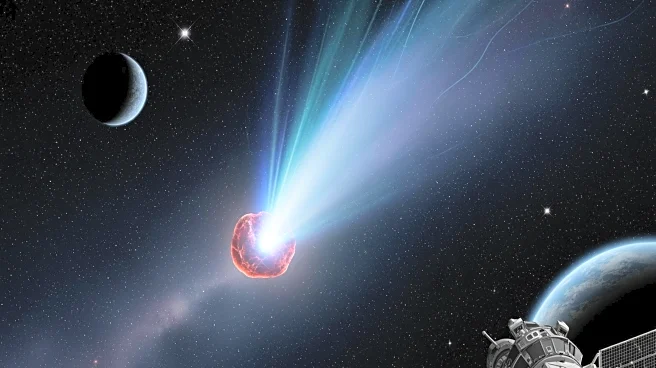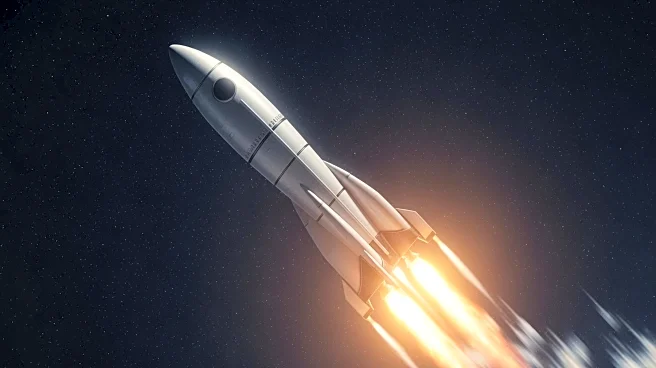What's Happening?
The European Space Agency's Solar Orbiter has provided scientists with a close-up view of the sun's magnetic field near its south pole, revealing surprising behavior. The spacecraft's observations, taken
over eight days in March 2025, show bright arcs created by magnetic structures moving toward the sun's edge at unexpectedly high speeds. This discovery indicates that the sun's magnetic field is migrating toward its poles faster than previously predicted. The sun's magnetism operates on an 11-year cycle, involving a 'magnetic conveyor belt' of plasma currents that sustain the sun's magnetic field. The polar regions, crucial to this process, have been difficult to study directly from Earth, but Solar Orbiter's tilted orbit has allowed researchers to gain new insights.
Why It's Important?
Understanding the sun's magnetic cycle is vital for predicting solar activity, which can impact Earth through solar storms and other phenomena. The new data from Solar Orbiter offers crucial information about the sun's polar regions, which play a key role in the magnetic cycle. This knowledge could improve forecasts of solar activity, potentially benefiting industries reliant on satellite communications and power grids. The findings also contribute to the broader understanding of solar physics, aiding scientists in developing more accurate models of the sun's behavior.
What's Next?
The Solar Orbiter's continued observations will likely provide further insights into the sun's magnetic field dynamics. Researchers may use this data to refine models of solar activity and its effects on Earth. The scientific community will be watching for additional findings that could enhance understanding of the sun's magnetic cycle and its implications for space weather forecasting.
Beyond the Headlines
The study of the sun's magnetic field has ethical and cultural dimensions, as it underscores humanity's reliance on technology vulnerable to solar activity. Improved understanding of solar dynamics could lead to better preparedness for solar storms, reducing potential disruptions to modern life. The research also highlights the collaborative efforts of international space agencies in advancing scientific knowledge.












